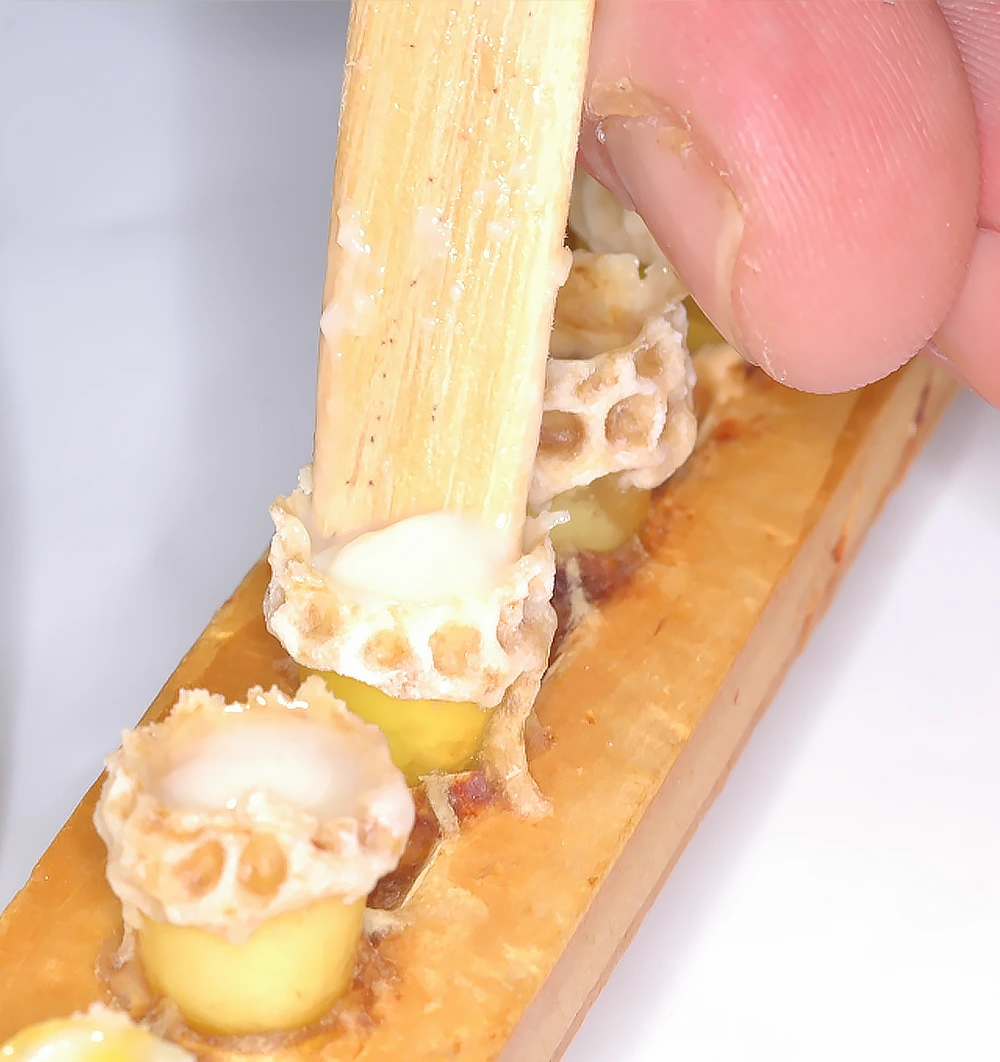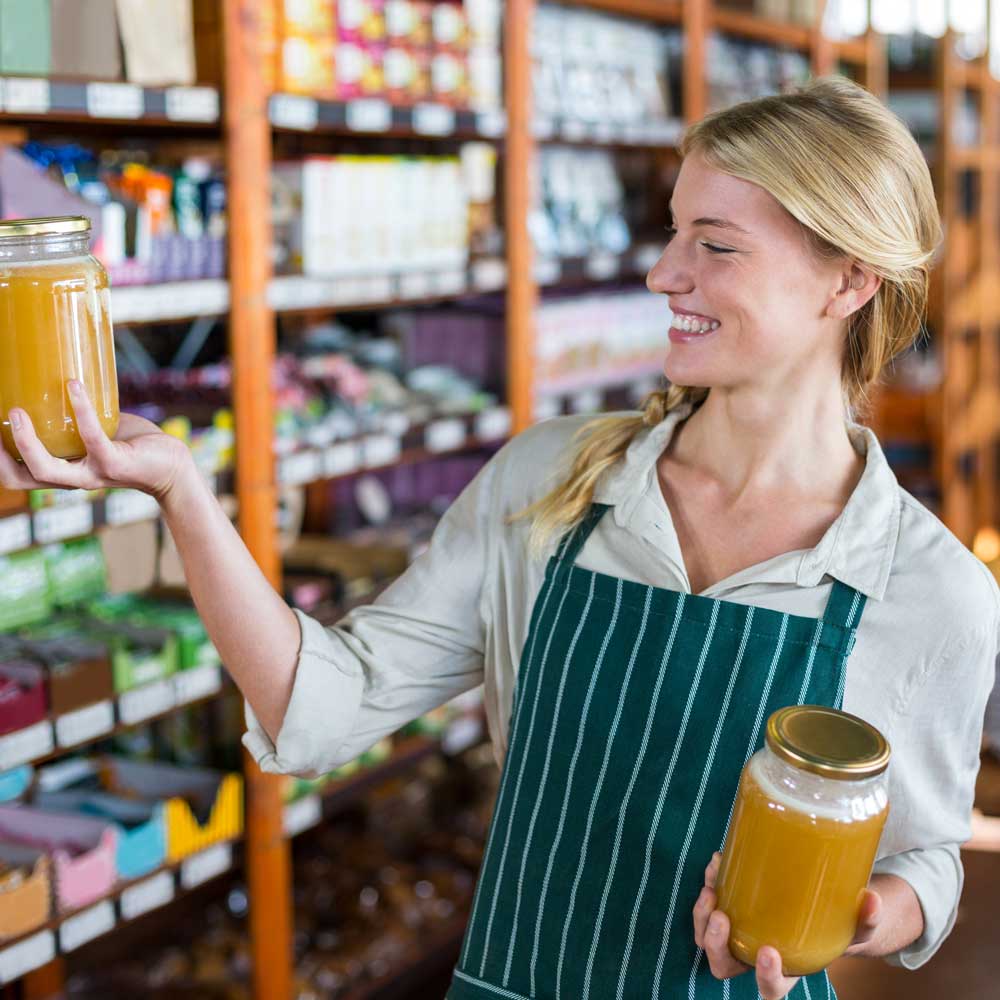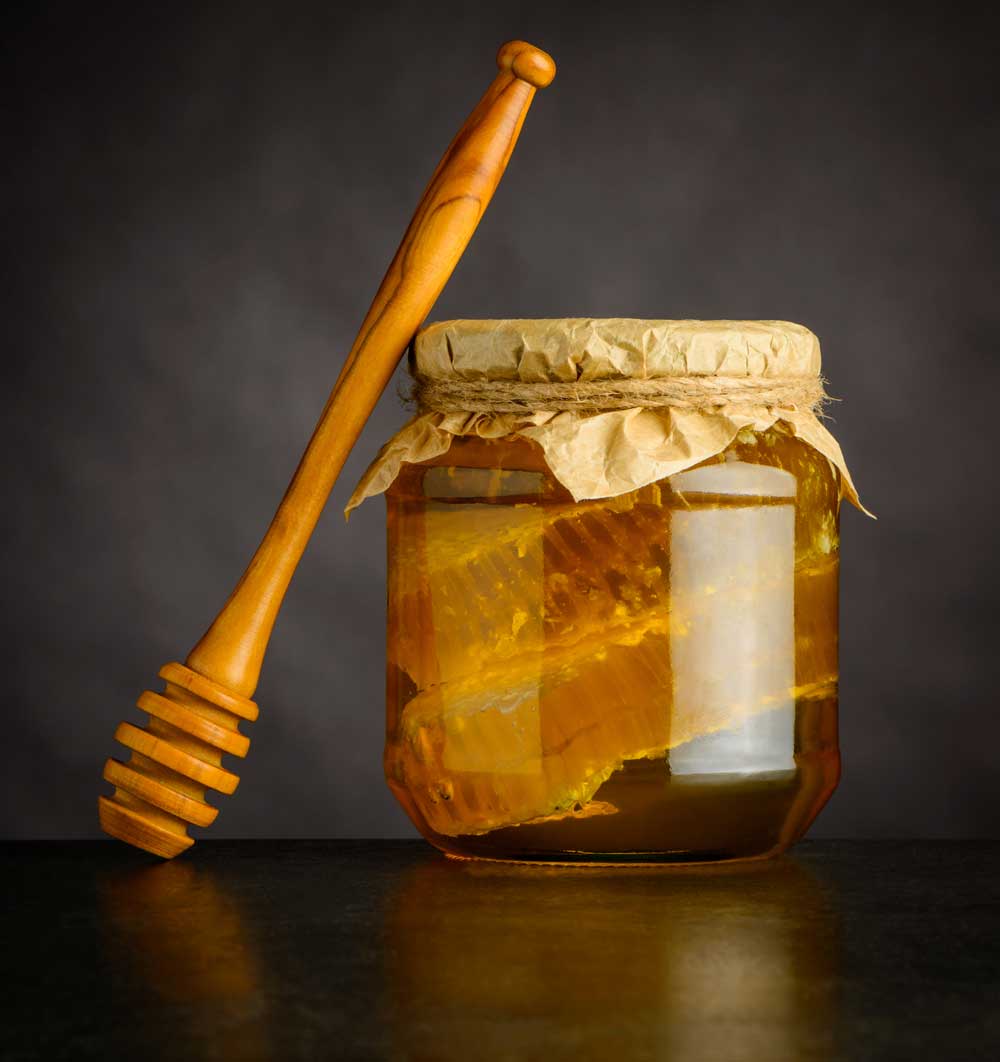
Bee venom
Bee venom is a transparent, thick liquid with a distinctive smell and a sharp, bitter taste.
What is Bee Venom?
For many animals, a beehive is a tempting treasure trove. Robbers find honey, pollen, and brood inside. Bees face threats from mice, wasps, and neighboring bee colonies. Bees have evolved an efficient defense system, using venomous stings against intruders. The stinger is ripped out, emitting a strong odor that attracts more bees to sting the invader. Bees have evolved to consider sacrificing a few individuals a minor loss but a fatal blow to most smaller intruders. The stinger lives outside the bee for enough time to squeeze out the entire venom sac’s content.
During a bee sting, approximately one-tenth of a milligram is released. While this tiny amount is an effective defense against other insects, a bee sting causes sharp pain, lasting one or more minutes for humans. This is followed by swelling and varied reactions, dependent on the number of stings, bee age, sting location, and individual sensitivity. In some people, a bee sting triggers an allergic reaction.
Venom Formation
Upon a bee’s emergence, the venom sac is fully developed, but venom production begins afterward. Around 15-20 days after emergence, the sac holds approximately 0.3 mg. The quantity varies with seasons and forage quality, ranging between 0.3 and 0.4 mg. The venom amount decreases in autumn and remains constant throughout winter, making stings less painful during late autumn and early spring.
Anatomy of the Sting
Bees inject venom with their stingers. Only worker bees and the queen have stingers, while drones lack them. The sting lies within the seventh abdominal ring and forms during the transformation of the eighth and ninth abdominal rings.
The sting comprises three parts – a groove and two barbs. The groove has three pairs of small lateral teeth at its end, while the barbs have 9-10 backward-curved hooks. Two tracks run along both edges of the groove, fitting into grooves on the barbs’ entire length. This design allows the barbs to move only forward and backward. The venom canal forms between them. During a sting, the bee bends its abdomen downward, inserting the barbs and groove into the substrate. The alternating movement of the barbs in the wound’s internal edges forces the sting deeper while expelling venom. If the bee stings a soft surface, it can’t retract the sting due to the barbs, but when stinging a hard surface, like another insect’s chitinous armor, it can pull the sting out since the wound edges don’t contract.



Composition of Bee Venom
Bee venom is a cocktail of various substances that, in specific proportions, cause maximum harm. Volatile substances in the venom cause a burning pain. Enzymes like phospholipase A2 and hyaluronidase loosen tissue to facilitate venom spread. Melittin is nephrotoxic and creates pores in cells, destroying them. Apamin strongly affects the nervous system, causing spasms. A specific peptide triggers histamine release, leading to an allergic reaction (potentially anaphylactic shock). Apamin, hyaluronidase, and mainly phospholipase A2, the main allergen, contribute to this reaction. Some histamine is already present in the venom. The alarm pheromone released during a sting highly irritates surrounding bees, prompting them to attack the stung area. The venom also contains formic, hydrochloric, and phosphoric acid, acetylcholine, and magnesium ions.
Bee venom acts aseptically – 1:50000 dilutions are still sterile.
KOMPONENTA | DELOVANJE |
Melittin (Polypeptide Comprising 26 Amino Acids) Melittin is classified as a pore-forming peptide, where four melittin molecules create pores in the cell membrane, leading to the leakage of cellular contents and cell demise. Melittin exhibits various biological effects: |
|
Apamin (Polypeptide Comprising 18 Amino Acids) Apamin, consisting of 18 amino acids, exhibits the following properties: |
|
Mast Cell Degranulation: |
|
Adolapin Adolapin is characterized by the following properties: |
|
Kardiopeptid Kardiopeptid is characterized by the following properties: |
|
Hyaluronidase Hyaluronidase is characterized by the following properties: |
|
Phospholipase A Phospholipase A exhibits the following characteristics: |
|
EXTRACTING BEE VENOM
Until recently, experts used venom from live bees, treating various ailments with bee stings.
Traditional Extraction Methods
In Russia, bees were captured in a jar and sedated with ether, causing them to release venom on the jar’s walls. Another method involves forcing a bee to sting a glass plate, leaving venom behind. Modern venom collection utilizes electrical impulses to irritate bees, with a dark glass surface as the base.
Healing Properties of Bee Venom
Insights from traditional medicine and experiences of many physicians indicate certain healing properties of bee venom. While the exact mechanism is not fully understood, it is confirmed that bee venom, in specific cases:
- Reduces and alleviates pain
- Lowers blood pressure
- Decreases cholesterol levels
- Increases overall tension in muscle tissue
- Enhances the body’s overall performance
Among all beehive products, bee venom is undoubtedly the least explored and tested. Bee venom affects:
- Blood circulation
- Digestive organs
- Respiratory system
- Nervous system
Successfully used in treating:
- Rheumatism
- Osteoarthritis
- Arthritis
- Gout
- Heart attacks
More recently, it has been used for:
- Hematomas
- Neuralgia
- Sciatica
- Allergies
- Hay fever
Application Forms:
- Direct bee stings
- Injections
- Ointments
Handle with Extreme Caution!
Due to the risk of allergies and anaphylactic shock, bee venom treatments should only be done under strict medical supervision. Inexpert use can cause irreversible damage and, in the worst case, lead to death in individuals sensitive to this substance.



Opinions
Bee Stings against Rheumatism and Arthritis
Most people fear bee stings; some even require medical attention due to them. However, in a hospital in Beijing, patients queue up to be stung by bees. Bee sting therapy, performed by stinging specific body points, has been practiced in China for 3000 years. The method resembles acupuncture, but instead of needles, bee stingers are used. The key is bee venom, considered a natural remedy by experts. Doctors at Kang Tai Bee Hospital, practicing traditional Chinese medicine, claim that bee sting therapy has proven effective in treating arthritis, rheumatism, and numerous other conditions. "Bee sting therapy positively impacts patients affected by skeletal and related diseases," says Dr. Wang Jing. "The essence is bee venom, influencing circulation, reducing inflammation and pain," he adds. Hybrid crossbreeds of Italian and Persian bees, with 0.3 mm long stingers carrying around 0.3 milligrams of venom, are used in the process. Doctors place bees on painful areas or acupuncture points using tweezers. The bees instinctively sting the patient and die. The stinger remains embedded in the body for several hours. Doctors determine the number of bees used for one therapy, averaging four to five stings, and in severe cases, up to 100 bee stings.
PROVIDERS



ČEBELARSTVO KOTNIK
Jože Kotnik, Prepuž 3, 2316 Zgornja Ložnica
Unlike Russia, where specialized clinics offer bee sting therapies, this form of therapy is not legally permitted here. It must be added that despite its simplicity, this therapy can have life-threatening consequences in addition to allergic reactions. Bee venom has a toxic effect, causing diarrhea, vomiting, elevated temperature, redness at the sting site, and flu-like symptoms. It can also increase liver values. Therefore, therapy should be conducted under medical supervision. Although not recommended, some individuals use bee venom at their own risk. From personal experience, this therapy yields positive results for rheumatic conditions, spine and joint pain, hip pain, inflamed tendons, and multiple sclerosis. Worldwide, bee venom therapy is increasingly used for treating cancer.